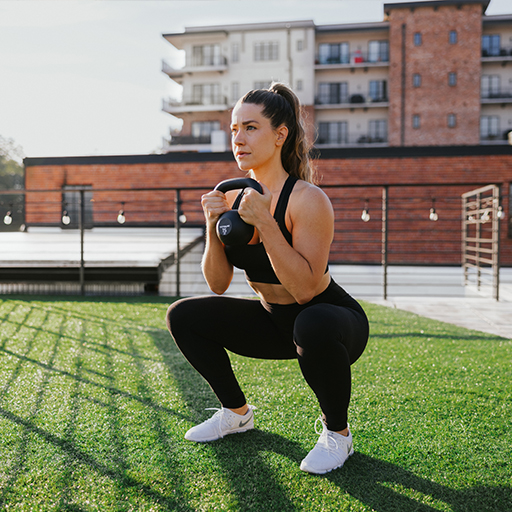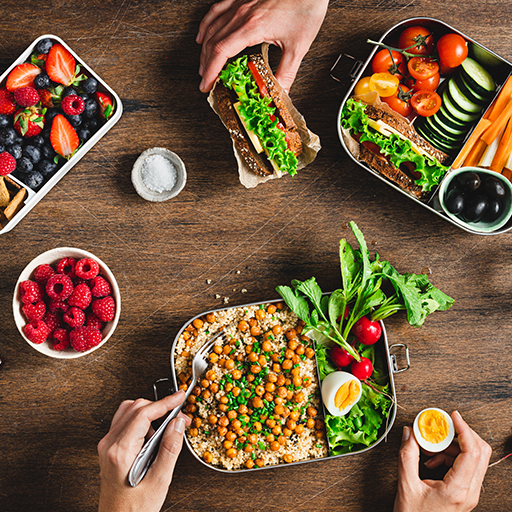In the quest to build a strong, healthy body, fitness enthusiasts often focus on either losing fat or gaining muscle. But is it possible to work toward both goals at the same time? Many trainers and fitness experts will tell you that losing body fat and gaining muscle simultaneously is possible — but you have to understand how to do so and be willing to do what it takes to get there. Let’s take a closer look at how to go about losing fat and gaining muscle at the same time.
What Is Losing Fat and Gaining Muscle All About?
Essentially, losing fat and gaining muscle simultaneously means “getting toned.” It refers to shaping the body and slimming down. It would be one thing if the human body were made up of only one consistent material, but it’s not. Our bodies are comprised of many different types of materials of varying densities. Getting the body into shape involves both losing fat and gaining muscle. But muscle and fat are two very different materials, and working with each requires a different approach.
In other words, we can’t swap out fat for muscle or muscle for fat. Your body composition is the ratio of fat mass to lean mass. Fat mass is just what it sounds like — body fat. But lean mass includes your muscles, bones, tendons, ligaments, organs, etc.
At first glance, the methods needed for the respective goals of losing fat and gaining muscle seem to be at odds with each other. Losing fat requires burning more calories than you consume. But to build muscle, you need to consume more calories than you burn.
To burn fat, you need to ensure your body is in a calorie deficit. This means eating fewer calories than you burn every day. A deficit means that your body must tap into pre-existing fat to get the energy to move or exercise. On the flip side, your body needs to be in a calorie surplus to gain muscle. A surplus means that your body has excess calories to rely on for energy, so any fat stored on your body remains untouched.
So, how do we tackle the paradox of losing fat and gaining muscle at the same time?

Is it Possible to Lose Fat and Gain Muscle at the Same Time?
Getting toned is not always easy — but it is possible, and anyone can do it with the proper guidance, knowledge, and self-discipline.
Making your body more athletic, or losing fat and gaining muscle simultaneously, is done by changing the fat mass ratio to lean mass. This process is very different from weight loss. Losing weight means losing both fat and muscle. It makes your body smaller, but your shape doesn’t change. Many people can lose weight and feel very slender but not have the shapely and toned physique they want or the muscle strength they desire.
Instead of aiming for weight loss, focusing on fat loss tends to be healthier for your body. It also helps to ensure that you don’t lose muscle definition. Fat loss boils down to consuming fewer calories than you burn — or being in a calorie deficit.
The Mayo Clinic offers a free calorie calculator to estimate the daily calories you need to maintain your current body weight.
When you’re low on calories or on a cutting diet, as some trainers call it, your body will depend on pre-existing fat when you’re exercising, but it will also start to break down muscles. For optimal health, it’s generally best to avoid breaking down muscle. This will result in a healthier body that looks and feels toned.
Losing fat and gaining muscle help reduce your body fat percentage because the fat mass ratio to lean mass decreases. You are changing your physique, not your weight. As you begin this process, you can see your body change. You might notice that your favorite pair of jeans fit slightly differently or that your stomach looks firmer. Even if you begin to gain weight, it will feel like your physique is smaller overall.
What Does Energy Have To Do With Losing Fat and Gaining Muscle?
When working on losing fat and gaining muscle all at once, it’s essential to consider where calories go. When we burn calories by expending energy from the body, does our body pull from muscle or fat tissue? The short answer is: we don’t know! When we reduce our caloric intake, we don’t get to control whether our bodies turn to fat or muscle for energy. It would be great if all our calories fed our muscle tissue and none fed our body fat, wouldn’t it? The uncertainty of where our calories will go is called calorie partitioning.
What Is Calorie Partitioning?
Calorie partitioning depends on how much protein our bodies gain or lose when they are over-fed or under-fed. This number is referred to as the P-ratio. For the most part, we can’t control the P-ratio because it tends to be genetic. But physiologist Lyle McDonald explains that we do have control over about 15%–20% of it, based on how we diet and what we do when we exercise.

Hormones are one of the main determinants when it comes to our P-ratios. Higher testosterone levels lead to reducing more fat than muscle. And chronically high levels of cortisol lead to reducing more muscle than fat.
However, it’s still tough to predict what percentage of energy goes toward creating muscle cells versus fat cells when we are in a calorie surplus. If you are doing enough training for strength, consuming enough protein, drinking enough water, etc., your body could theoretically use stored fat to build muscle tissue. But it doesn’t happen this way for most people.
You want to eat 300–500 calories per day above your baseline needs for sustainable muscle gain without excess fat gain.
How to Easily Lose Weight and Gain Muscle at the Same Time?
The people who stand the best chance at losing fat and gaining muscle at the same time fall into two different groups based on how long they have been strength training, their current ratio of fat mass to lean mass, hormone levels, and genetics.
See which group you fall into to find out how to go about losing weight and gaining muscle at the same time.
People With High Body Fat and No Training Experience
If you haven’t done strength training before, it will be easy for you to gain muscle. And those with a higher percentage of body fat have more energy to spare and gain muscle. A higher body fat percentage also means that your body is likely more insulin resistant, a condition in which your fat cells resist taking on more calories, so the energy is diverted toward muscle.
Strength training will help muscles grow rapidly, improving insulin sensitivity and the muscle cells’ ability to uptake nutrients. When both of these factors are present, it is a perfect combo for losing fat and gaining muscle at the same time.
Very Athletic People Coming Back From a Break
Athletes who, for various reasons, have not been as active in some time also find losing fat and gaining muscle at the same time much easier than most. They lost muscle mass and gained body fat during their reprieve, but it is easy to rebuild that mass due to the muscle memory effect. They are also more likely to be the kind of people excited about working out and may have previously had a training schedule they can easily jump back into.
What About Everyone Else?
Losing fat and gaining muscle is more difficult for people who are very lean and muscular — but it is still possible. It requires an exercise program and diet that maintains the right amount of caloric intake versus expenditure.
The best way to approach this problem is to tackle one objective at a time. Losing fat and gaining muscle can be subsequent goals instead of simultaneous goals. Many people have found it most effective to focus on losing body fat first and then working toward toning and gaining muscles.
You need a healthy diet and cardiovascular exercise to get into a calorie deficit that enables fat loss. Fad diets are never good because they often aim to shed pounds too quickly. This isn’t safe or healthy, and these diets are tough to maintain over time. Lower your calories and do cardio exercises that keep your heart rate up, and you will start to trim some fat off your body.
Once you have shed some fat, you can begin the muscle-building process. This involves strength training and dietary changes. You want to add protein to your diet — and a lot of it. Protein helps your body convert fat into muscle. When you do strength training, you push your muscles to the point that they start to tear and break down. In the time between workouts, protein helps your body repair muscles and build them back up.
In addition to changing your diet and incorporating cardio exercise and strength training, it is critical to ensure that your body gets adequate sleep each night. Sleep is the body’s time to repair, replenish lost energy, and heal broken tissues.
How Titan Fitness Can Help
Losing fat and gaining muscle isn’t easy — but it certainly is possible. With a blend of determination, discipline, and mental strength, you can achieve anything! If you’re interested in setting up a home gym, Titan Fitness has all the equipment you need. Browse our collection of home gym equipment and choose the gear you need to meet all of your health and fitness goals.


